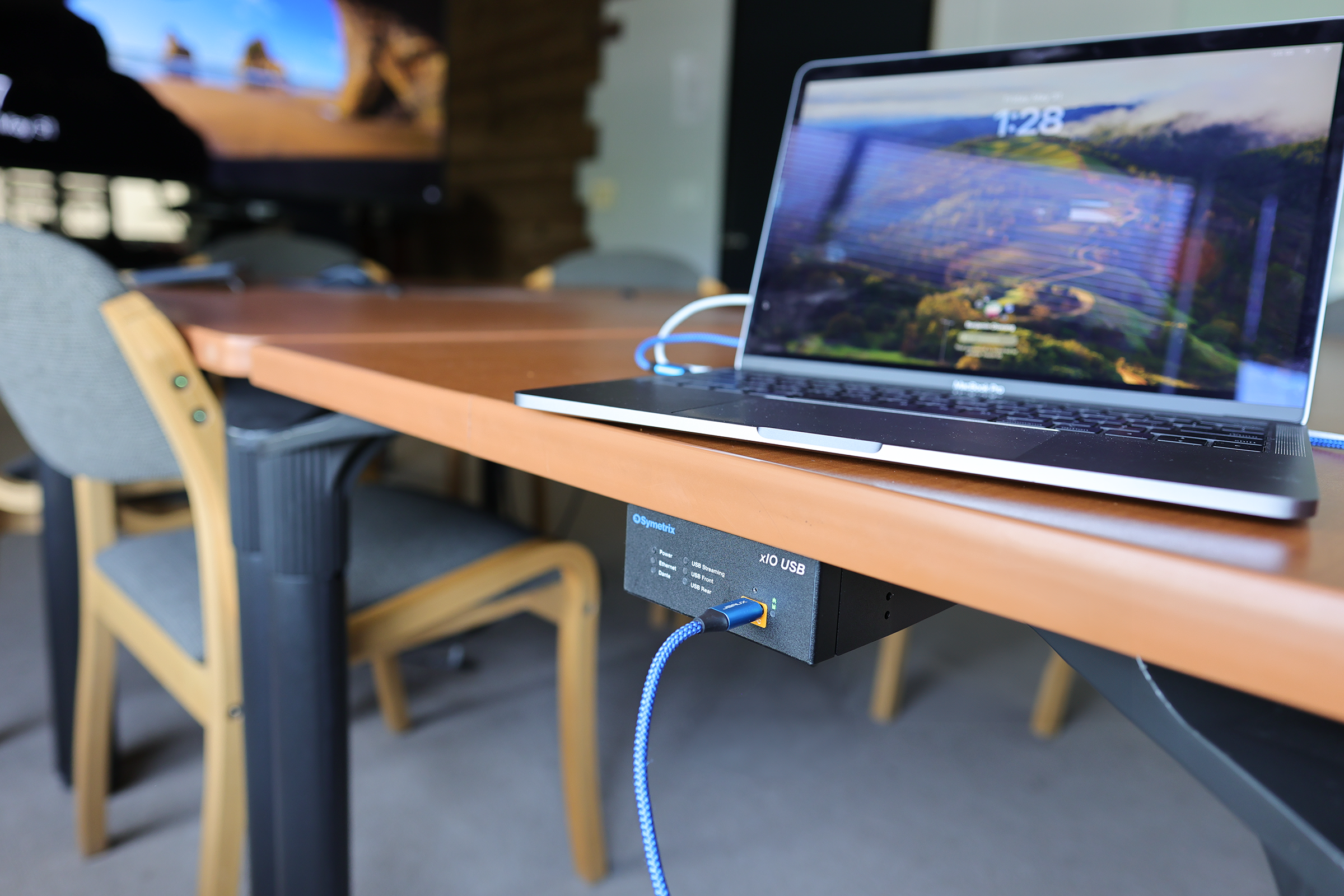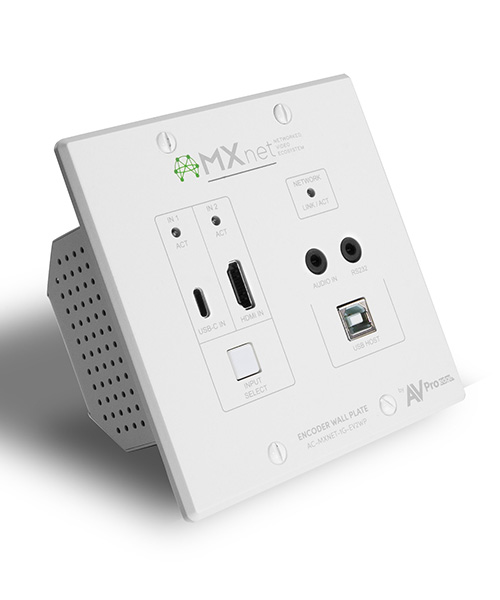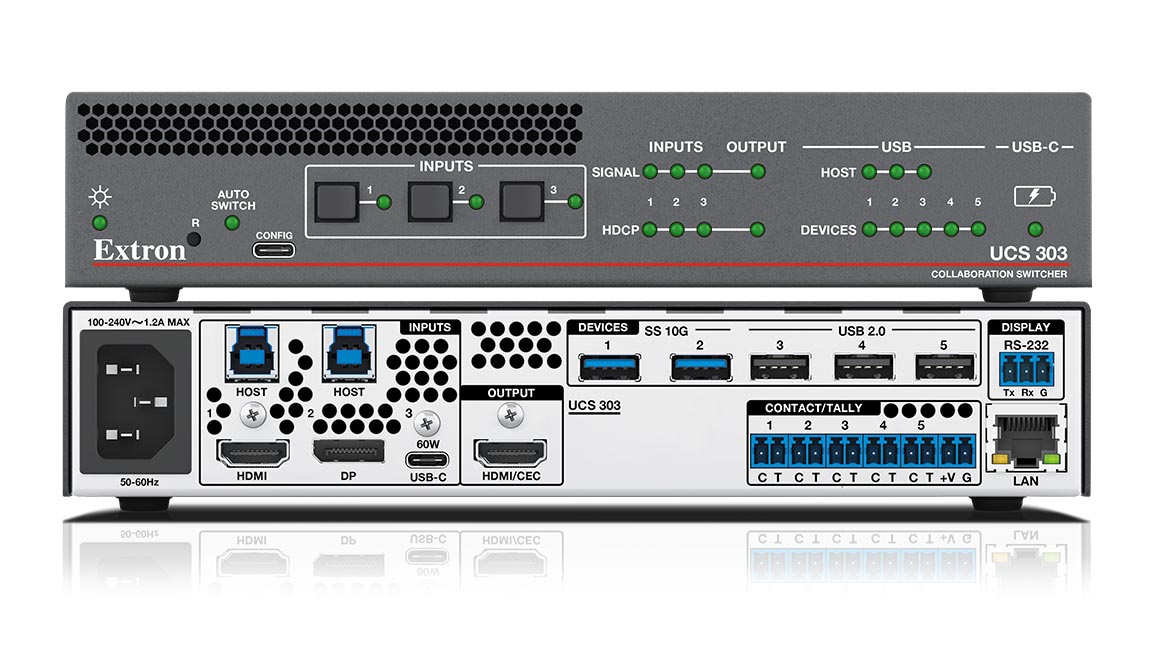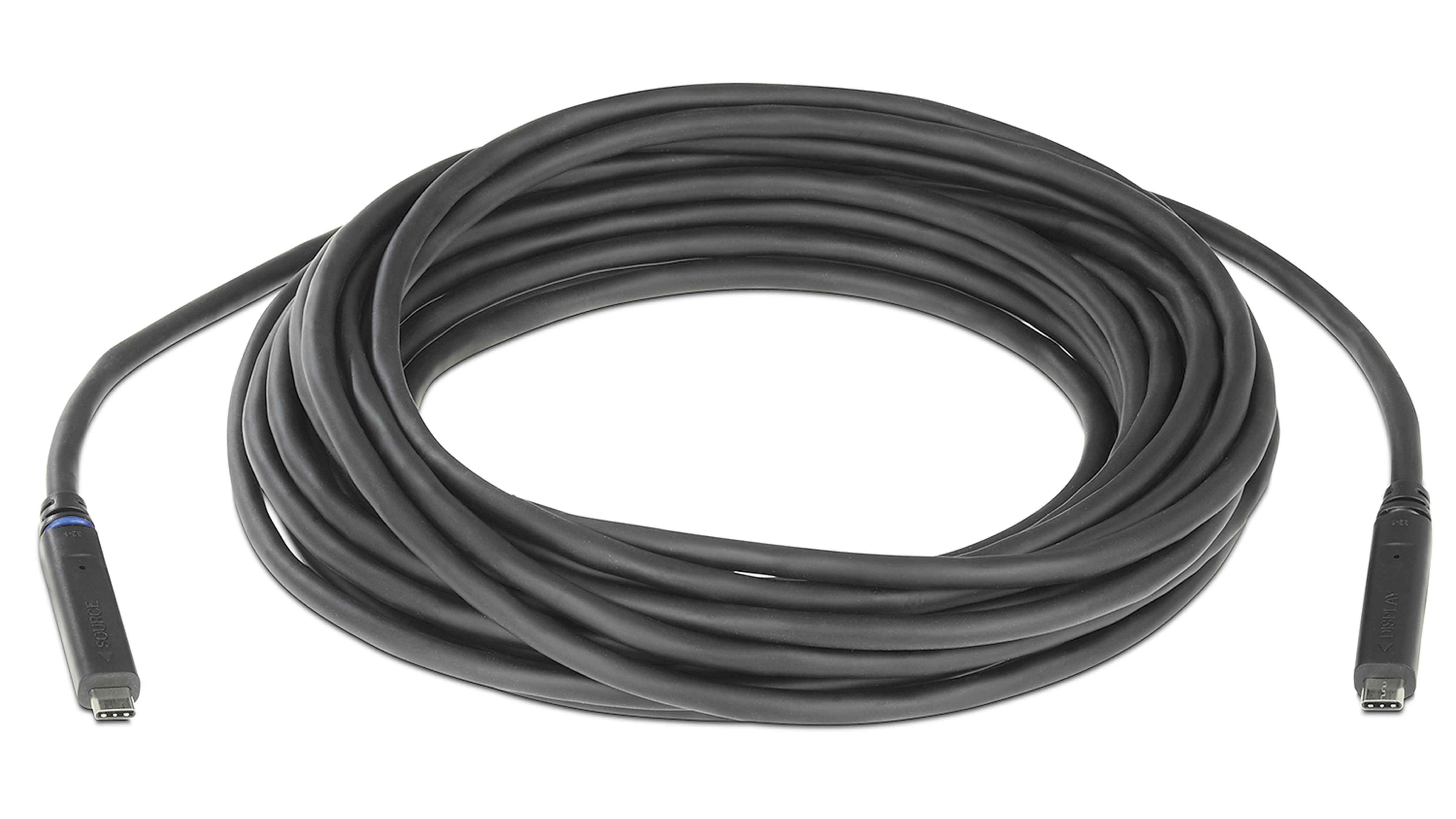When it comes to seamlessly sharing AV content over Ethernet between a wide range of devices, USB-C connectors and AV-over-IP networks are truly a marriage made in connection heaven. Indeed, USB-C is so useful for AVoIP applications precisely because this connection system is both flexible and extremely capable.
"It can be used in a variety of ways,” said Samuel Metivier, applications engineering director of USB-C signal extension solutions with AVPro Global Holdings. “Whether used for transporting USB signals back and forth, as an intake for DisplayPort video to be sent around to multiple displays, or an ‘off-ramp’ converting the AVoIP video signal into a USB Video Class [UVC] device, there are a multitude of ways to fit a USB-C connection into a AVoIP system.”
[What's In Your Conference Room?]
“USB-C is excellent for point-to-point connections from a node in an AVoIP network to BYOD consumer level devices,” added Ted Wolfe, CTO, Symetrix. “Its high data rates and ability to carry various existing and future AV and control protocols, as well as increasing desire by users and governments for standardized connectors, have made the USB-C connector the de facto standard for point-to-point connections. For instance, the inclusion of the power delivery feature available with Symetrix's xIO USB Dante endpoint allows for a single connector between our sophisticated open architecture system and the user's laptop.”
Of course, any USB-C connection is only as good as its cable. The signs of a good USB-C cable include “a good build quality, not being too thin, and displaying the USB-IF logo to denote the capabilities of the USB-C cable,” said Metivier. “The best USB-C cables include support for a minimum of 100 watts of power delivery and feature a smart E-Marker chip.”
World Domination

Look around the Pro AV world and you will see USB-C being used in all kinds of installations. The main reason for USB-C’s domination in the Pro AV space is its sheer usefulness. For Symetrix, computer connectivity is the primary use case. “It's commonly used to connect Teams and Zoom devices to integrated audio systems, whether to a dedicated machine or BYOD," Wolfe said.
AVPro Global Holdings is seeing USB-C generally being deployed to connect for interactive touchpanels and all-in-one video displays. “However, we are seeing an increase of USB-C ports on smaller mini PCs for UCC rooms and KVM switchers,” added Metivier.
Extron is experiencing a similar trend. “We see the primary use for USB-C in UCC spaces that need a video output and USB data connections with the room's USB cameras and microphones for use in Teams or Zoom meetings,” said Joe da Silva, VP of marketing, Extron. "With a single connection, a laptop can connect to the room's display to share content locally, while also connecting to the room's USB cameras and microphones to share the room's video and audio along with the presenter's content with remote participants. Without USB-C, this would require multiple connections to the laptop for video, USB data, and power.”

There are many reasons why USB-C is sweeping away other connectors in the Pro AV world. Chief among these is the "combination of speed, power delivery, reversibility, protocol compatibility, and simplicity combine to provide an ease of use that no other connector matches,” said Wolfe.
According to da Silva, USB-C's multi-faceted support for video, power, and USB signals over a single connector makes it an attractive solution for Pro AV designers, integrators/installers, and end users. "USB-C simplifies the interface connections needed at a conference table or lectern,” he observed. “These are real cost-saving solutions that reduce installation costs and operational needs for AV systems in any space, from a small meeting room to a large operations center.”
Competitive Analysis
USB-C is just one of many connection options for Pro AV. So how does it stack up against the competition?
Let’s start with members of the USB family. According to Metivier, USB-C offers more capability than USB-A and Micro USB connectors, due to USB-C having up to 15 additional pins in its format. With these extra pins, USB-C can support connection-orientation negotiation, SuperSpeed USB data, and power delivery over a single cable. This puts it ahead of USB-A and Micro USB, he said.
Then there’s USB-C’s standing versus Lightning and Thunderbolt. “Apple's proprietary Lightning connector is a small form factor connection used on older iPhone and iPad products,” said da Silva. “It is reversible like USB-C but isn't designed for USB-C high-speed data rates like USB 10 Gbps or higher. It also requires adapters to transition to other connector types, and so isn't comparable to USB-C with its all-in-one video, USB data, and power capabilities.”
In contrast, Thunderbolt uses the USB-C connector but offers a higher performance standard than USB—and is fully backward compatible with USB. “Consequently, a device that supports Thunderbolt can also support USB video, data, and power capabilities,” da Silva continued. (Of course, Apple’s recent adoption of the USB-C standard for iPhones to comply with European Union regulations renders much of this discussion moot.)
Finally, there’s HDMI, which still has a place in the AVoIP operating environment. “My opinion is that USB‑C is best for video connections to conferencing solutions that are running on Windows, Mac, or Linux computers,” said Wolfe. “HDMI is best for connecting devices to monitors, projectors, and video switchers.”
Metivier isn’t so sure. “Using the USB-C in the DisplayPort Alternate Mode with Multi Stream Transport allows for up to four extended monitors to be sent over the same cable,” he said. “In my opinion, this added flexibility could be crucial for some applications versus HDMI's single display support.”

Da Silva takes a pragmatic approach to the debate. “If your needs are strictly video and the source device supports HDMI, then HDMI is likely your most cost-effective solution,” he declared. “However, as soon as you want to power a laptop or support USB data, then USB-C quickly becomes the preferred option. Also, some laptops may not provide an HDMI output, so USB-C becomes the de facto option.”
[Strategies and Solutions for Corporate Campus Displays]
No technology is perfect, including USB-C. For example, when you need to send lots of AV over longer distances between multiple devices with flexible routing, Wolfe said a different technology is required. Still, USB-C remains an excellent connectivity option for Pro AV applications.
"This is why USB-C connections should be incorporated wherever they add value to a Pro AV design, particularly in areas like UCC spaces,” da Silva said. “And as USB-C becomes the dominant connector on laptops and other mobile devices, it will become increasingly important to include USB-C connections in other video distribution areas as well.”

